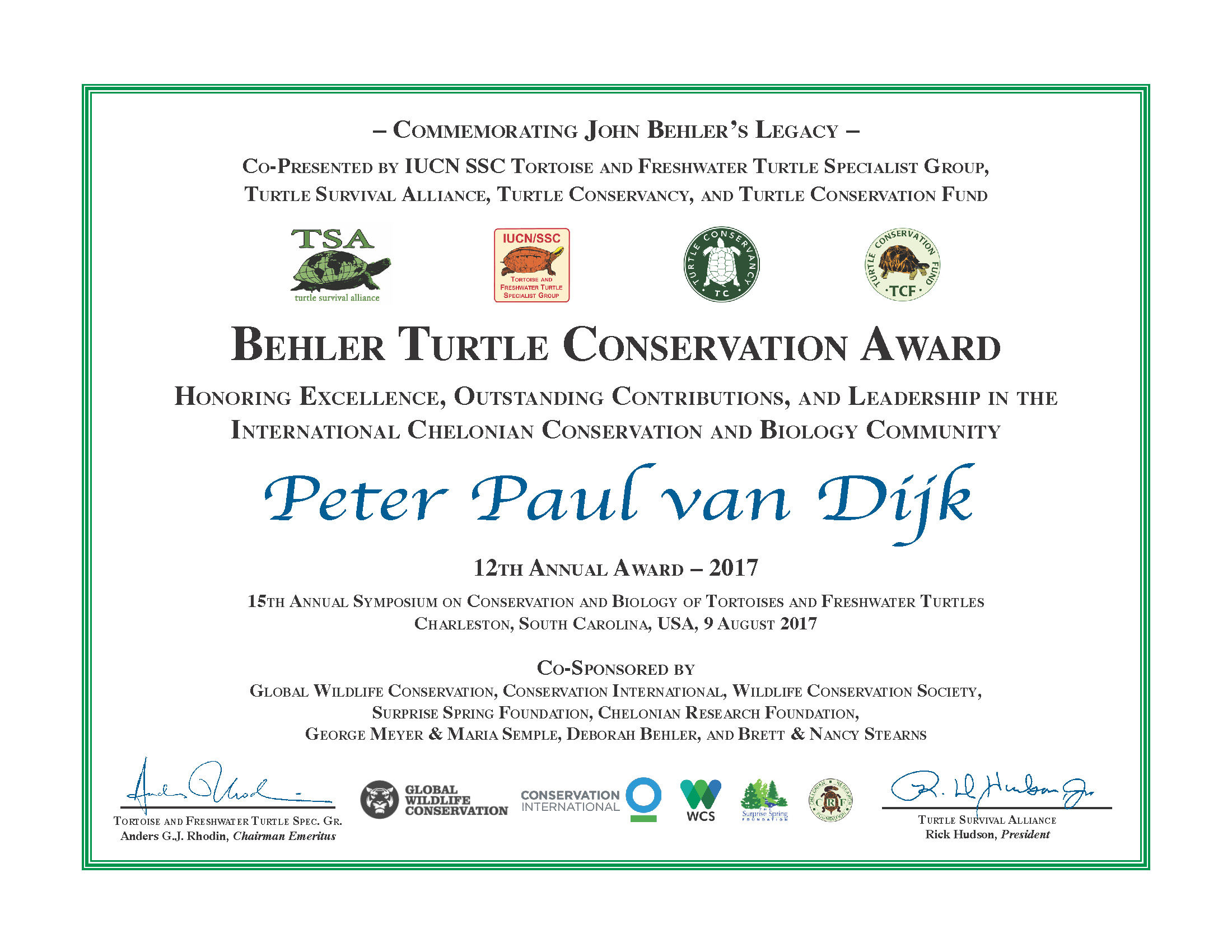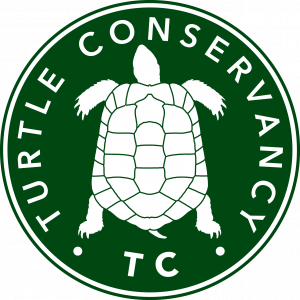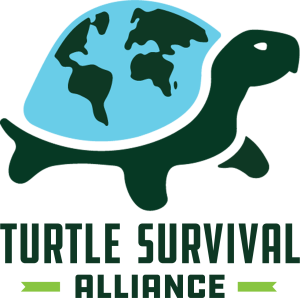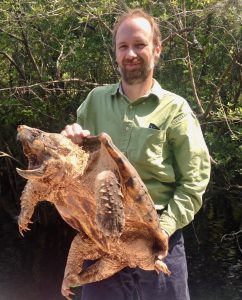Peter Paul van Dijk
Peter Paul van Dijk Receives the 12th Annual 2017 Behler Turtle Conservation Award
Peter Paul van Dijk, 2017 Behler Turtle Conservation Award Recipient
by Anders G.J. Rhodin and Russell A. Mittermeier
from Turtle Survival Magazine 2017[2018]:58–59.
(download pdf from Turtle Survival magazine here)
The 12th annual Behler Turtle Conservation Award celebrated and honored Peter Paul van Dijk for his quarter-century of dedication to turtle science and conservation.
Peter Paul likes to point out that he was born in what was a good year for turtle research and conservation: 1967. That was the year Peter Pritchard published Living Turtles of the World, John Goode published his book on the Chelid Turtles of Australia, and Whit Gibbons began his groundbreaking work on Trachemys scripta at the Savannah River Ecology Lab.
Growing up in the Netherlands, a cool, damp country with no native turtles, Peter Paul’s childhood interest in animals initially focused on fish, aquarium keeping, and the occasional tortoise. Of course, there was the inevitable hatchling Red-eared Slider early on, but turtles did not enter Peter Paul’s life until several years later when, as an 11-year-old, he was presented with a bucket of four adult Red-ears. That opened the floodgates to what would eventually grow into a collection of various turtle species filling a greenhouse. Peter Paul supported his aquarium and turtle hobby by working Saturdays in a pet shop with a large aquarium section, giving him up close familiarity with a range of species from all corners of the Earth (at a time when the pet wildlife trade was rarely perceived as detrimental) and fueling curiosity about the places and habitats from where these animals originated.
After completing secondary school in the Netherlands, Peter Paul moved to western Ireland to study Zoology at the National University of Ireland in Galway. He took up scuba diving, did a BSc thesis on taxonomy of the gobiid fish genus Lebetus, and was well on his way to becoming a fisheries biologist monitoring Atlantic commercial fish stocks. Turtles and herpetology looked to remain a spare time hobby, including such highlights as attending the First World Congress of Herpetology in Canterbury in 1989 and becoming inspired by the people he met who had been surveying Indian turtles, breeding the Ploughshare Tortoise, rescuing the Western Swamp Turtle, and discovering new side-necked turtles (when we both met him for the first time).
Peter Paul started his postgraduate studies in late 1990. He was faced with the prospect of spending the winter doing little more than reading papers in the lab because sea conditions would be too rough for sampling. Instead, with support from his research supervisor James J. Dunne, Peter Paul decided to indulge his childhood fascination with turtles and other small tropical animals and booked a three-month-long trip to Thailand. He hoped to travel onwards and do some initial turtle survey work in Myanmar, Viet Nam, or Laos. Peter Paul never received a visa to enter any of those countries on his trip, but through an introduction from Padraigh O’Ceidigh, his Professor of Zoology in Galway, he connected with Kumthorn Thirakhupt at Chulalongkorn University in Bangkok. Kumthorn had recently decided to switch his research focus from birds to tortoises, and a long-term collaboration and friendship between the two took off immediately.
That trip to Thailand was the start of a new chapter for Peter Paul, who spent most of the I990s in Thailand. Together, Kumthorn and Peter Paul surveyed the distribution and status of the tortoises and freshwater turtles of Thailand, researched natural history and conservation biology of turtles, and studied a variety of wetlands, fish, and herpetofaunal assemblages. Peter Paul completed his doctoral research and dissertation on the natural history of the Elongated Tortoise (Indotestudo elongata) in the Huai Kha Khaeng Wildlife Sanctuary. This provided Peter Paul with extensive experience and solitude in a mosaic of seasonally deciduous and evergreen tropical forest, and a deep appreciation of the interrelationships and complexities of its ecology.
Perhaps more valuable than all the turtle research taken together was a rainy afternoon spent cooped up in the guest bungalow of Mae Yom National Park. Peter Paul and a few colleagues were surveying the herpetofauna of the park as part of an environmental impact assessment (EIA) for the proposed Kaen Sua Ten dam across the Yom River. The initial EIA had reported that the dam and the 65-km2 reservoir it would create would not significantly affect natural resource and biodiversity values. However, researchers from Mahidol University had drawn attention to the expected flooding of Thailand’s last remaining native Teak (Tectona grandis) forest by the reservoir, as well as impacts on the park’s biodiversity values. Thus, the World Bank commissioned Chulalongkorn University to conduct a third, limited EIA to evaluate the two competing previous ElAs, and so Kumthorn, Peter Paul, and their colleagues found themselves at Mae Yom in the wet season of 1996.
Curious about the extent of the proposed reservoir, Peter Paul started tracing the 260 m altitude contour line and suddenly a much larger reservoir appeared on the map. In addition to the previously predicted 65 km2 reservoir tapering at its northern end between some hills, there appeared to be a large expanse of shallowly flooded land, used for agriculture, creating a total reservoir area somewhere between 79 and 114 km2. This realization was subsequently confirmed by GIS and cartography reassessments. With the prospect of drowning more agricultural land than would benefit from improved irrigation downstream, the World Bank withdrew its backing from the project. To date, the dam and reservoir remain a shelved plan and a conservation victory.
Peter Paul traveled to Myanmar in subsequent years, catching tantalizing glimpses of the possible survival of Batagur trivittata and documenting the persistence of Geochelone platynota in 1993. He collected and identified the first confirmed specimen of Chitra from the Mon River in 1994; these Ayeyarwady Chitra were described as a new species in 2003, named Chitra vandijki by McCord and Pritchard.
In the 1990s came the first indications of extensive collection and trade of wild turtles from the forests and wetlands of Southeast Asia. Peter Paul recognized the possible threat to Asian turtle survival – and realized that life as a non-salaried research associate at Chulalongkorn could not last forever. This prompted him to join TRAFFIC South East Asia in Petaling Jaya, Malaysia, just in time to co-represent the organization at the Asian Turtle Trade workshop in Phnom Penh, Cambodia, in December 1999. With Bryan Stuart and Anders, he focused on editing the workshop’s proceedings into a monograph published by Chelonian Research Foundation. The seminal monograph was widely cited in subsequent years as governments and NGOs tried to come to terms with the scale of the challenge and the measures needed to prevent total extirpation of Asia’s native turtle populations.
That was the tipping point. Peter Paul left natural history research behind and focused on becoming a trade data analyst and policy-focused conservationist with a strong focus on the Convention on International Trade in Endangered Species of Wild Fauna and Flora (CITES). Over the years, Peter Paul has supported preparation of several proposals to extend international trade regulation and supervision to several Asian and other freshwater turtle species. He’s analyzed the impact of Asian turtle trade for CITES, prepared guidelines for non-detriment findings for turtle populations subject to international trade, and reviewed the scale and scope of illegal turtle trade, among others.
While focused on wielding CITES as a conservation tool, Peter Paul left Malaysia for his native Netherlands. He was hired by Russ at Conservation International and encouraged to move to Washington, DC, to lead their Tortoise and Freshwater Turtle Conservation Program. This enabled extensive support for turtle conservation initiatives by Cl’s regional programs around the world, as well as resuming work on assessing all tortoise and freshwater turtle species for the IUCN Red List of Threatened Species. Ongoing assessments quantified the bleak picture that at least half of all turtle species are threatened with extinction.
Peter Paul was also at the core of Cl’s Wildlife Trade program, linking on-the-ground efforts by Cl and other NGO country programs with policy developments at CITES and in government wildlife departments in Washington, DC, London, Brussels, and elsewhere. As Cl’s mission evolved, Peter Paul recently found a new professional set of homes at Global Wildlife Conservation and the Turtle Conservancy. He focuses on in situ conservation work for severely threatened tortoises and freshwater turtles in Mexico, South Africa, Madagascar, and elsewhere, while remaining involved in CITES. He is currently the Nomenclature member of the Animals Committee.
Over the years, Peter Paul has been a core contributor to the Turtle Taxonomy Working Group Checklists, conservation strategies in various countries, and a wide range of publications. He was Deputy Chair of the IUCN Tortoise and Freshwater Turtle Specialist Group under Anders from 2000 to 2012, Co-Chair with Brian Horne from 2012 to early 2017, and is currently Deputy Chair under Craig Stanford. He also sits on the review board of the Turtle Conservation Fund, and has been a mentor, mediator, and partnership builder for many in the turtle research and conservation community.
In our estimation, Peter Paul is a walking encyclopedia of turtle biology, taxonomy, and conservation. He is both a critically important resource and highly respected leader for the global turtle conservation community, having focused a large portion of his efforts on improving regulatory aspects of the unsustainable global turtle trade. He is a clear and logical thinker, amazingly good at providing reality checks and critical insight on new ideas that emerge and evolve. More than that, he is a close and trusted friend and most valued colleague.
Although the great majority of his time is now spent in front of a computer, Peter Paul relishes any opportunity to see wild turtles in their natural habitat, whether a highly threatened tortoise in a desert area, critically endangered Ploughshare Tortoises in Madagascar, a snapping turtle in a clear water river, or a box turtle nesting in his own backyard in Virginia.











